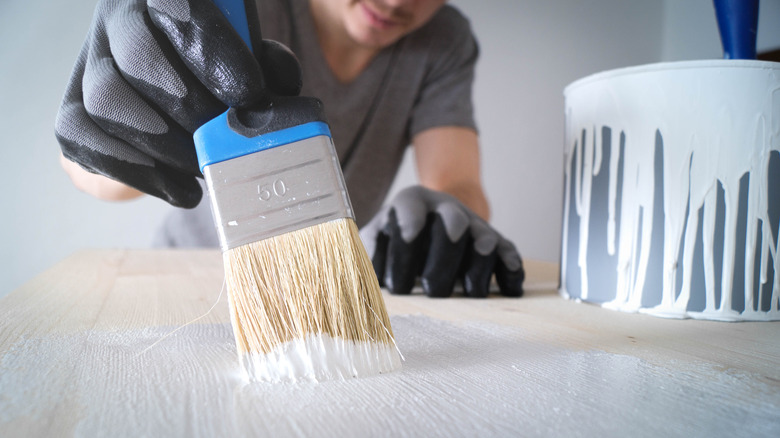How To Tell If You're Painting Over Oil Or Latex Paint
When painting over old paint, understanding what type of paint you're working with is a crucial first step that influences the success of your project. Many homes use oil or latex-based paints. Each of these types carries unique properties that can affect how your fresh layer of paint will stick to it. You might be wondering, how can you tell if the paint on your wall is oil-based or latex? You can use several straightforward methods to distinguish between oil-based and latex paint. The most common is the rubbing alcohol test. The best part about these tests is their simplicity and affordability. They don't require specialized or high-tech equipment, which is often a deterrent for many DIY enthusiasts.
While understanding the testing process may initially appear intimidating, especially if painting isn't in your regular repertoire of activities, there's no need to fret. This guide is designed to take the mystery out of the process, providing a step-by-step walkthrough of the testing methods, and ensuring you comprehend each procedure's workings.
The rubbing alcohol test
The rubbing alcohol test is one of the easiest and most reliable ways to determine if the existing paint on your wall is oil or latex-based. This straightforward method works on the principle that latex paint is soluble in rubbing alcohol, while oil-based paint isn't. When you apply rubbing alcohol to a surface painted with latex paint, the alcohol will soften and dissolve the paint. To carry out this test, start by soaking a cotton ball or cloth in rubbing alcohol, ensuring it is damp but not overly saturated. You want enough alcohol to interact with the paint, but not so much that it drips or creates a mess. Next, test in a small, unnoticeable area of your wall to avoid creating a visible mark that could potentially detract from the aesthetic of your room
Pay close attention to the cotton ball or cloth as you rub it against the wall. If you notice paint transferring onto the cotton ball, this indicates that the existing paint is latex. On the contrary, if your cloth or cotton ball remains clean, this points towards oil-based paint on your walls — oil-based paint types aren't affected by rubbing alcohol, which is why nothing comes off.
Why it's important to know the type of paint
Each type of paint has specific characteristics and is suited to particular applications. Oil-based paints provide a smooth, durable finish, which can be excellent for high-traffic areas. However, oil-based paints have longer drying times, which may extend your project timeline. They usually take up to eight hours to dry, while latex paint only takes around four. Oil-based paints also emit strong fumes that require ample ventilation, and oil-based paints are harder to clean up – usually requiring mineral spirits or paint thinner — whereas latex paints can be cleaned with simple soap and water. This can add complexity to your project, especially if a spill or accident occurs.
Incorrectly using oil-based paint over latex paint without proper preparation can lead to significant issues. The oil paint may not adhere correctly, leading to peeling, chipping, or flaking. On the other hand, latex paint is more flexible and can withstand weather changes better than oil-based paint, making it a better choice for outdoor use.


